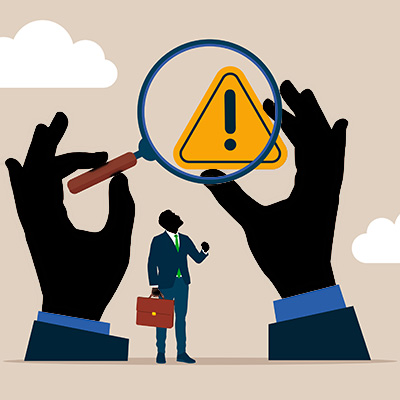Nowadays, companies grapple with a myriad of ethical challenges, necessitating responsible decision-making to keep the data they store secure. Some decisions that are made straddle the ethical line of right and wrong. Let’s take a look at five uses of technology that are controversial.
Technology plays a pivotal role in the operations of most businesses, but its primary function is to empower and support the workforce. Many employees have specific expectations when it comes to the technology provided by their organizations. Failure to meet these expectations can drive them to seek employment elsewhere. Let’s delve into five ways technology bolsters your employees’ productivity.
Sure, retailers have to manage their inventory effectively, but have you ever thought about the way your own business manages what it keeps on hand? Today we want to discuss five ways your business can more effectively manage inventory—and it turns out technology plays a pretty significant part in improving any inventory control system.
In many ways, a business is only as capable as its sales team allows it to be… and nowadays, a sales team is only as capable as their tech allows them to be. Let’s take a few minutes to discuss how you can turn this to your advantage by providing your sales team with the technology that supports their goals.
Over the course of a year, a month, or even a single day, your business accumulates and utilizes a lot of data. You need systems in place to make good use of this data, otherwise your business is leaving efficiency on the table. Today we want to go over some proper uses for your data and how to make the most of this golden opportunity.
Many businesses, irrespective of their size, are increasingly turning towards managed services to streamline their operations, reduce expenses, and elevate their overall customer value proposition. The utilization of managed services has revolutionized the landscape, not just in terms of cost-saving, but also in facilitating businesses to grow and extract greater value from their IT infrastructure. Let’s take a look into how managed services achieve this dual objective.
In an era where businesses rely heavily on data and technology, the need for comprehensive disaster recovery solutions has never been more critical. The stakes are high when it comes to safeguarding your company’s digital assets and ensuring business continuity in the face of unforeseen disasters. This is where Disaster Recovery as a Service (DRaaS) comes into play.
Businesses need to be cognizant of the role technology plays in today’s operations. Not only do you stand to lose ground on your competition if you fail to properly invest in your technology, it can have other negative effects on your business as well. This week, we outline eight things that can go wrong if you aren’t constantly looking to build a technologically savvy business.
The United States Federal Trade Commission’s mandate is to prevent fraud and promote consumer protection in today’s interconnected world, where the digital landscape continues to evolve at a rapid pace. The FTC recognizes the importance of safeguarding consumer information and has implemented their Safeguards Rule as a means to ensure that businesses protect sensitive data from unauthorized access and misuse. Let’s take a look at the Safeguards Rule and what you need to know about it in regard to your business.
How does your business handle communication? Does it struggle to properly use its technology and collaboration tools? If so, we have some tips that can help you avoid the most common collaboration mistakes, particularly those related to data security. Read on to learn how you can ensure you’re not putting your data at risk needlessly with inappropriate collaboration security mistakes.










